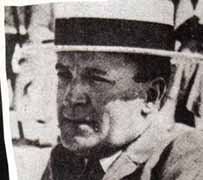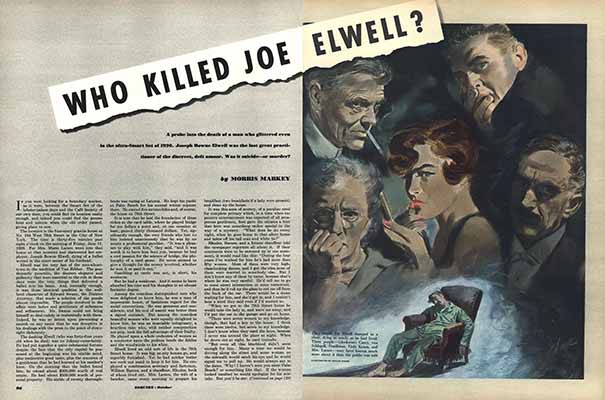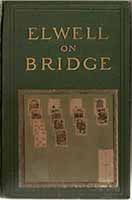![]() Joseph Bowne Elwell (1873–1920), surnommé le « Sorcier du Whist »,
il enseigne le bridge au roi d’Angleterre et au millionnaire Harold
Vanderbilt, avant de devenir le partenaire régulier de ce dernier, de
1910 à 1920, formant avec lui la plus forte paire du moment.
Joseph Bowne Elwell (1873–1920), surnommé le « Sorcier du Whist »,
il enseigne le bridge au roi d’Angleterre et au millionnaire Harold
Vanderbilt, avant de devenir le partenaire régulier de ce dernier, de
1910 à 1920, formant avec lui la plus forte paire du moment.
Considéré à son époque comme le plus grand joueur vivant, il a marqué le bridge primitif et le bridge aux enchères, gagnant une belle notoriété par ses écrits.
Le jeu en bourse et des investissements immobiliers en Floride lui assurent des revenus confortables, lui permettant d’entretenir une somptueuse demeure remplie d’objets d’art, à Manhattan, ainsi qu’une importante écurie de courses.
Tandis qu’il mène grande vie, passant d’une conquête féminine à une autre, on lui prête toutes sortes d’activités mystérieuses, plus ou moins farfelues, notamment membre du contreespionnage et trafiquant d’alcool ! Francis Scott Fitzgerald l’aurait même pris pour modèle de Jay Gatsby, le héros de son roman The Great Gatsby (Gatsby le Magnifique).
Mais il passera sans doute à la postérité pour des raisons plus sordides. En effet, le 11 juin 1920, il est retrouvé avec une balle dans la tête dans l’une des pièces de sa maison de Manhattan, fermée de l’intérieur. Ce meurtre en chambre close, digne d’un roman, ne fut jamais élucidé.
Il donna d’ailleurs matière à nombre de livres, films et pièces de théâtre, et serait également à l’origine de la vocation de Frederic nay (1905–1982) et Manfred Lee (1905– 1971), deux cousins qui se rendront célèbres dans la littérature policière sous le pseudonyme d’Ellery Queen.



